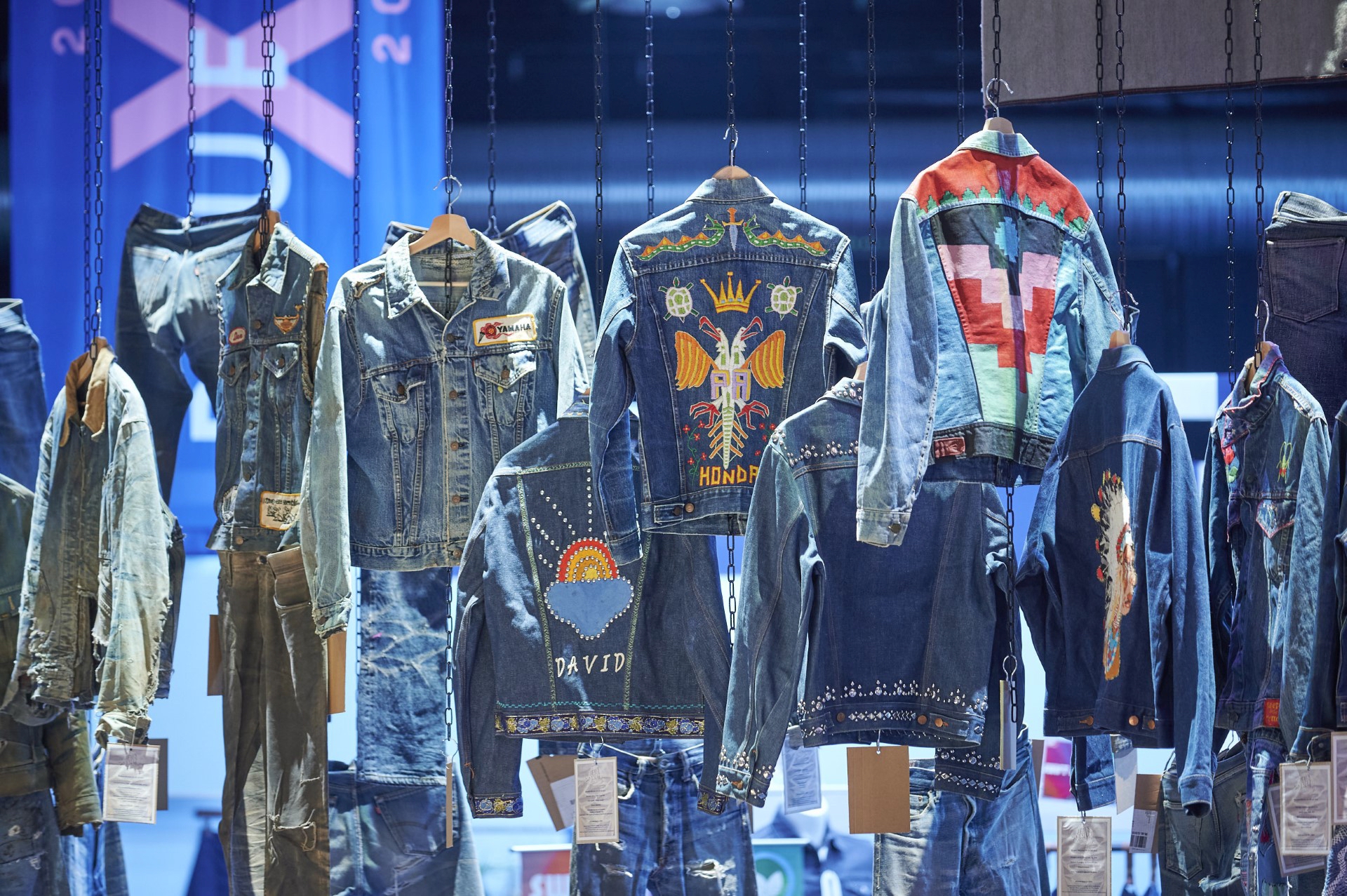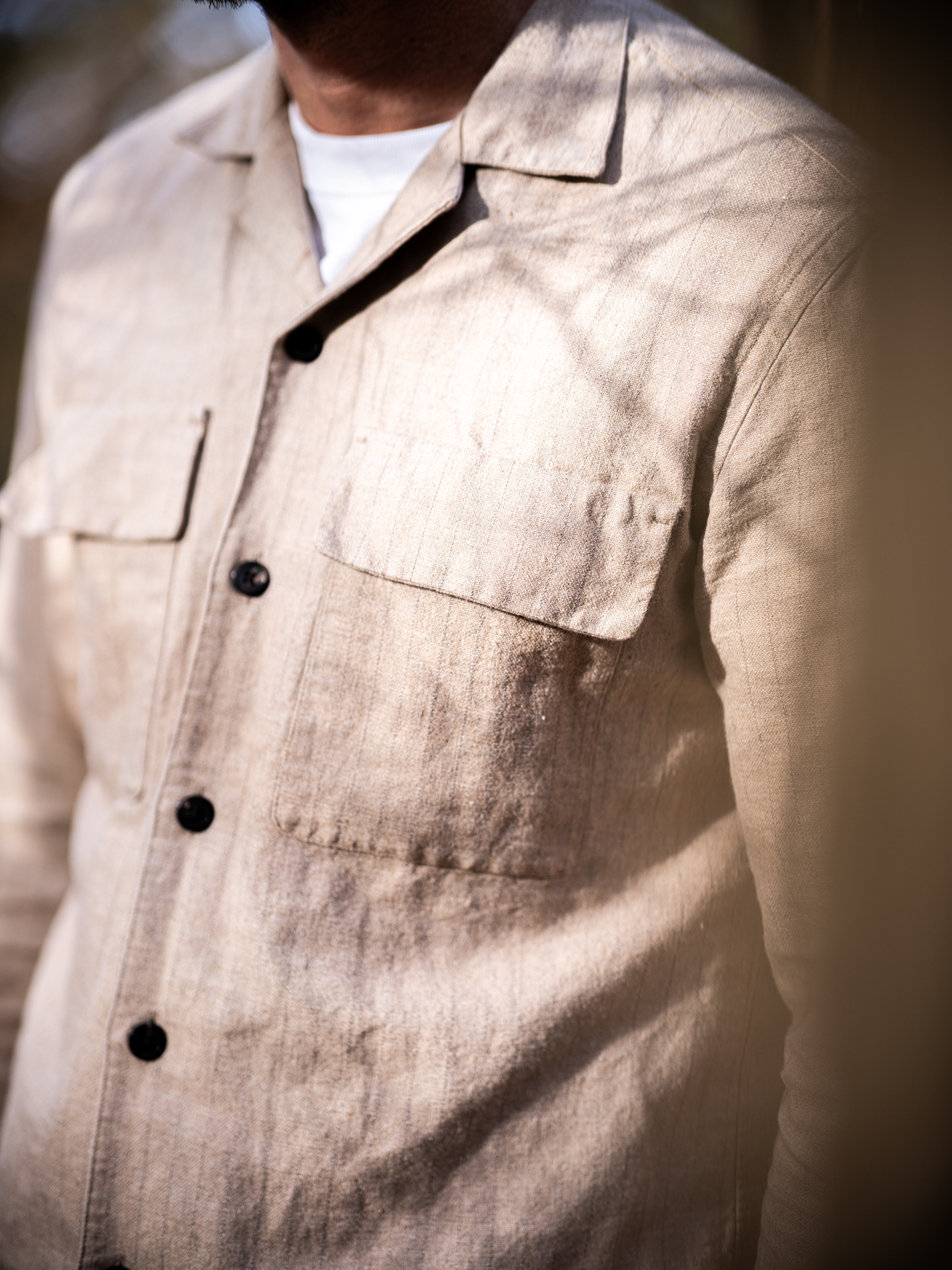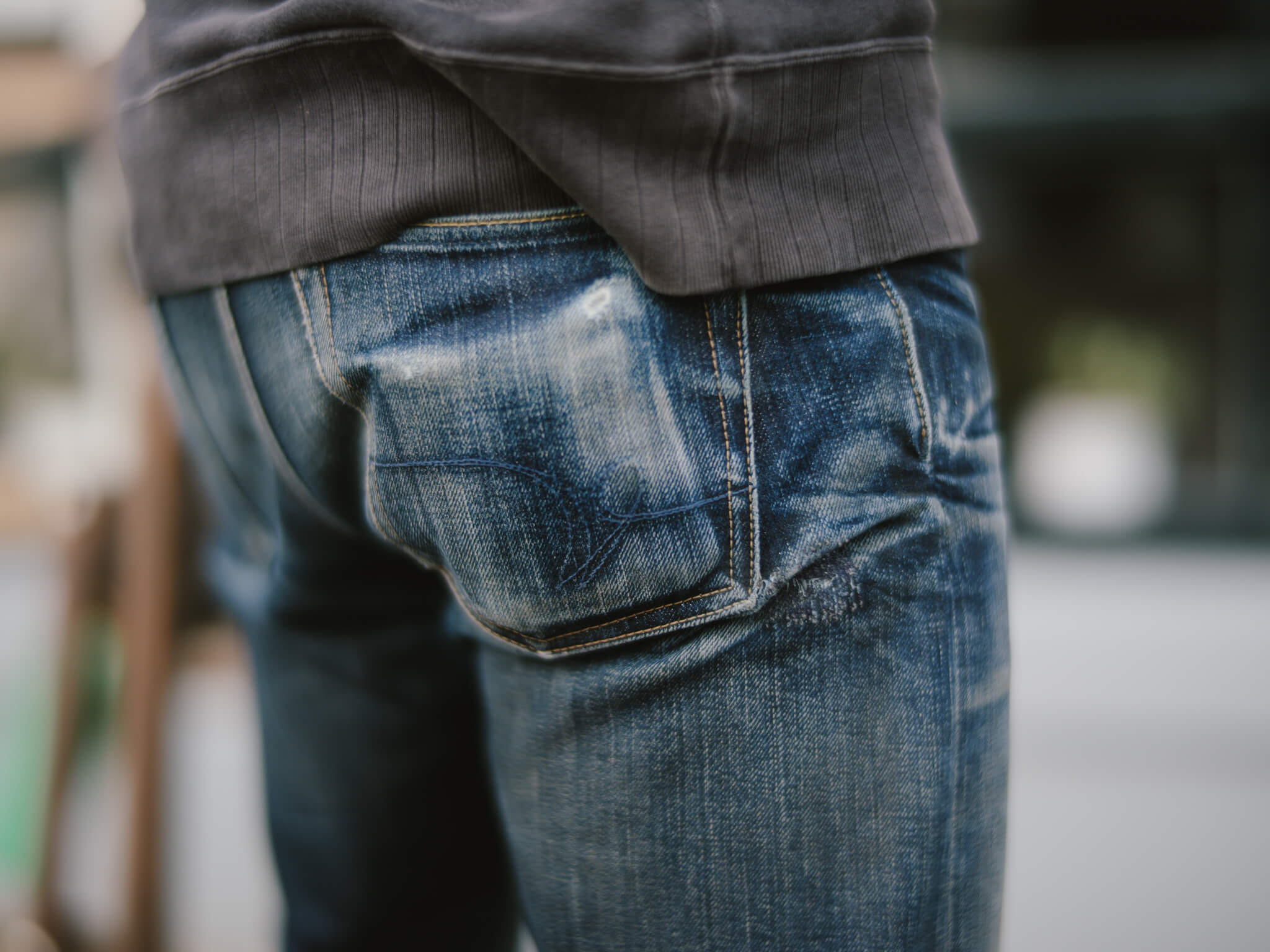The fabric called denim – Indigo dyeing
In succession of our articles about cotton and ginning & spinning, we will continue our series with the process of indigo dyeing. Until this stage, the cotton yarns are still white(ish), however, this will change drastically when the process of dyeing begins.
For many denim heads indigo is a magical word. The way it’s made and the way it fades is just pure magic. A few months ago, we wrote an article about indigo dye, which you can read here, today, however, we will look specifically at the dyeing process. While looking into this process, we will focus on two different techniques of indigo dyeing. These specific techniques have a large impact on both the price of a pair of jeans, and the manner in which they will fade.
Just like other stages in jeans manufacturing, indigo dyeing was traditionally done by hand. This process, known as ‘Hank dyeing’ or ‘Skein dyeing’ is a labor-intensive and time-consuming process that has mainly been replaced by modern and quicker techniques.
First, will we briefly look at the indigo dye itself, before we will focus on ‘Hank’ and ‘Rope dyeing’.
Indigo dye
Indigo, in both its natural as synthetic form, is water-insoluble until it undergoes a chemical change. By adding additives to the hot water and indigo mixture, the indigo molecules will slowly change. After some time, the indigo will be soluble with water and will be able to attach to the cotton fibers.
The dye will turn out yellow/ greenish and so will the dyed yarns. When the indigo dye gets in contact with oxygen, it oxidizes back into its blue water-insoluble form. The more often this dyeing process is repeated, the deeper the blue shade of indigo will be.
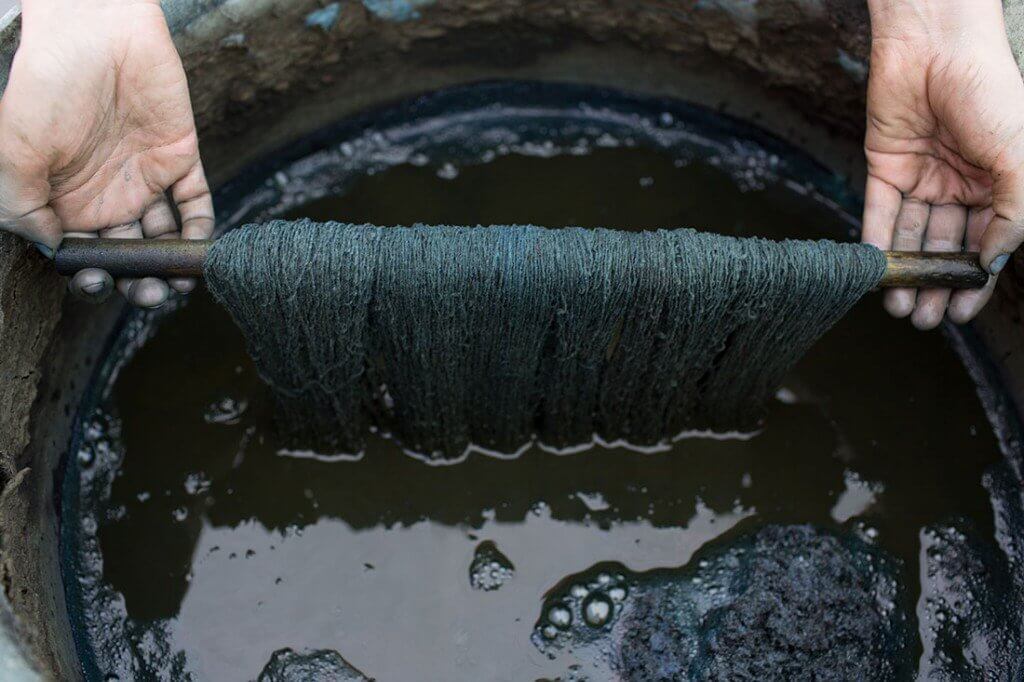
Photo courtesy of Denimhunters
Hank dyeing / Skein dyeing
Yarns dyed following the ‘Hank‘ or ‘Skein dyeing’ method, are bundled into a hank before they are washed in order to get rid of natural oils and to open the cotton fibers. Next, it is dipped in the indigo dye for several hours, then washed and dipped again. This process will be repeated until the required color is achieved, after which the yarn will be steamed to secure the color.
Over the years, ‘Hank dyeing’ has been replaced because of its labor-intensity and high costs. But, there are still a couple of brands, such as Pure Blue Japan and Studio D’Artisan, that use ‘Hank dyed’ fabrics for some collections.
Over the years, several new techniques have been introduced to make the dyeing process more effective and, most importantly, cheaper. One of those new techniques is rope dyeing and is nowadays considered to be the best technique.
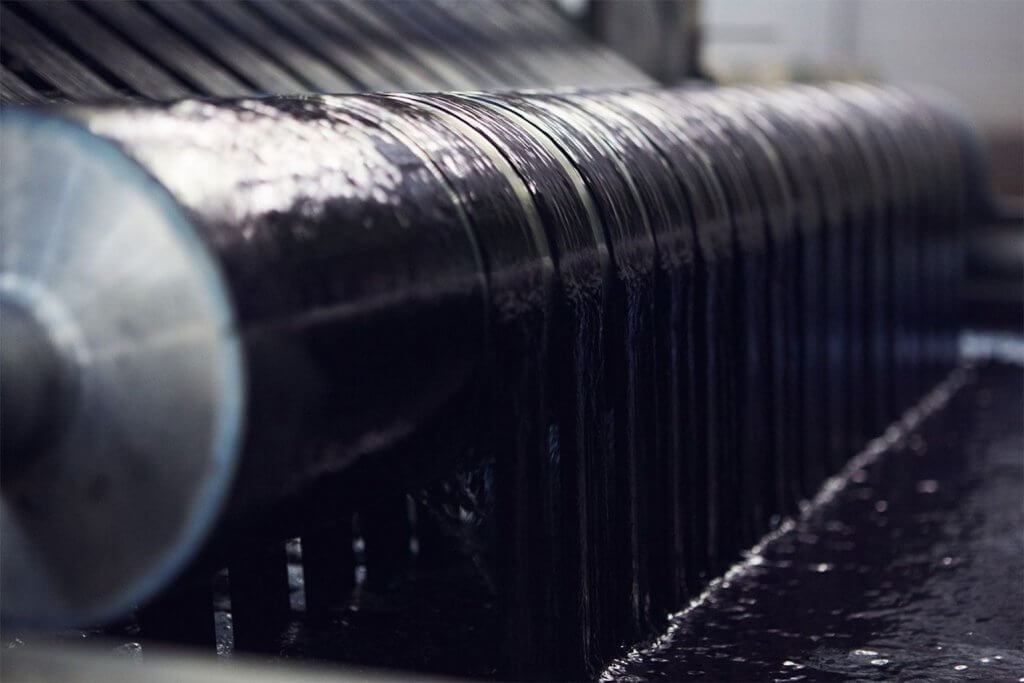 Photo courtesy of Uniqlo
Photo courtesy of Uniqlo
Rope dyeing
Because of the high-level of color uniformity it can achieve, rope dyeing is considered to be the best technique. The yarns are shortly and repeatedly dipped in indigo resulting in a dyed surface while the core remains cotton colored. These ‘ring dyed’ yarns fade faster than yarns that are completely soaked with indigo.
Before the yarns are dyed, they are bundled into ropes and washed in water to prepare the fibers for the dyeing process. The ropes are then shortly dipped into an indigo bath, after which they are exposed to air and then dipped again. This process will be repeated up to 12 times, until the desired color is achieved. Afterwards, the yarns are washed in water to remove the excess of indigo and they are dried and starched. Now the yarns are ready for the next step, weaving.
Now the cotton has been cleaned and spun, and the yarns are dyed in indigo, they are ready to be woven. Next week we will look into the weaving process of the yarns. Finally, those fluffy white cotton bolls will turn into something that resembles selvedge denim.
 Share
Share
 Tweet
Tweet

